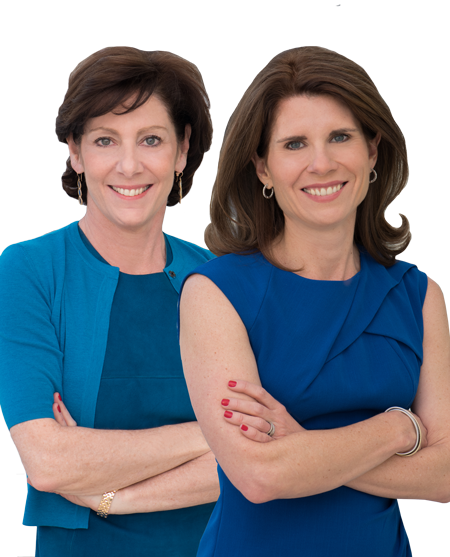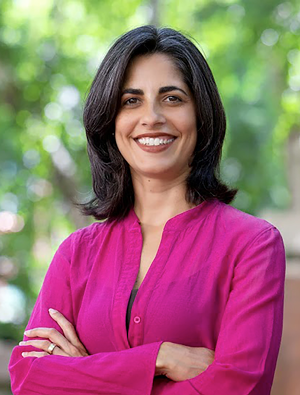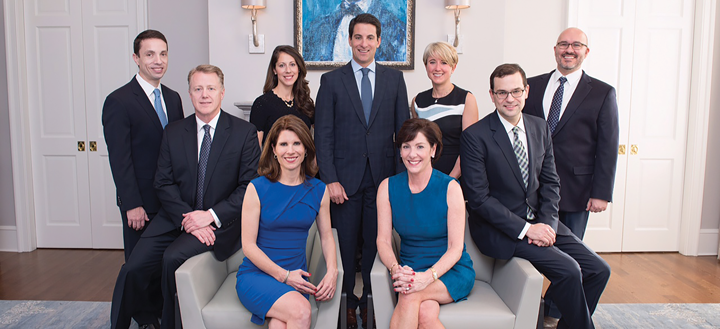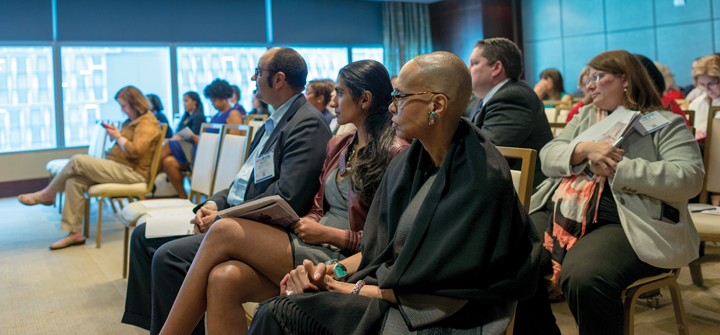Female First-Chairs: Firm's founders chip away at male litigation domination

Beth Wilkinson and Alexandra Walsh. Photographs Courtesy of Wilkinson Walsh & Eskovitz.
It’s not hard to find exaltations for litigators who make up partnership ranks, Beth Wilkinson says. But in terms of actual experience trying sophisticated cases—as opposed to writing stellar dismissal motions—most big law firms have fewer than three people who’d meet that description.
Very few of those are women. According to a 2015 report by the American Bar Foundation and the ABA Commission on Women in the Profession, which sampled 2013 filings in the U.S. District Court for the Northern District of Illinois, women in private practice at large and small law firms accounted for 16 to 25 percent of first-chair appearances. And a more recent study of multidistrict litigation produced similar numbers for female first-chairs.
A former partner with Paul, Weiss, Rifkind, Wharton & Garrison who by her count has tried about 45 cases to verdict, Wilkinson left in February 2016 to form her own law firm with Alexandra Walsh, another Paul Weiss partner. Sean Eskovitz, a former Munger, Tolles & Olson shareholder based in Los Angeles, joined them. Now, cultivating as many sophisticated trial lawyers as possible is a significant part of the Wilkinson Walsh & Eskovitz business plan.
“If you really want to grow your business and make more money,” says Walsh, “you’ve got to promote and help develop the talents of people who are working for you. That’s what gets the pie bigger.”
She and her partner spoke while seated at a small table in Wilkinson’s office, which was in that state of midorganization that comes when preparing to go to trial. The firm is at the top of an eight-story midrise in the Washington, D.C., business corridor.
Half of the partners at Wilkinson Walsh & Eskovitz are women; and with the exception of the appellate partner, they all have experience first-chairing trials.
“Due to many things, there are far fewer women with first-chair trial experience, especially in large or complex cases, and therefore it is difficult for women without that type of experience to get those opportunities,” says Wilkinson. She and her partners are hoping to change that. As of December, they had 30 lawyers and were interested in picking up more associates who write well, think critically and either have or want to have significant trial experience.

Jaya Ramji-Nogales. Photo Courtesy of Jaya Ramji-Nogales.
According to Wilkinson, litigators fall into two groups: people who really like to try cases and people who say that but don’t mean it. The first group, she says, will take any case, even if it’s a tough one, and they are willing to jump in at the last minute. They also refuse to let their fears about making mistakes stand in the way of trying.
“If you go through trials enough, you see that things don’t always go perfectly. Beth messes things up, I definitely mess things up, and the associates may very well mess things up,” says Walsh, a former clerk for U.S. Supreme Court Justice Stephen G. Breyer. “It’s how you learn.”
TEAMING UP
Wilkinson grew up in a military family. Her father was a U.S. Navy submarine captain; and after graduating from the University of Virginia School of Law in 1987, she spent four years in the Army Judge Advocate General’s Corps. A former assistant U.S. attorney in New York City, she also worked on the team that prosecuted Oklahoma City bombers Timothy McVeigh and Terry Nichols. In private practice, Wilkinson co-chaired the white-collar defense practice of Latham & Watkins and served as Fannie Mae’s general counsel.
Walsh was a partner with Baker Botts before joining Paul Weiss. She and Wilkinson knew each other through Merrick Garland, chief judge of the U.S. Court of Appeals for the District of Columbia Circuit. Walsh clerked for Garland, and Wilkinson worked for Garland when he was the Justice Department’s principal associate deputy attorney general.
“I’d learned a ton and worked for some great trial lawyers, but when it came time to actually have someone take a chance on [letting] me stand up in trial and say, ‘OK, you can do this,’ Beth was the only one willing to do it,” Walsh says. By the beginning of her second year at Paul Weiss, Walsh was second-chair on a trial Wilkinson led, for which the firm was hired less than three weeks before trial.
Walsh, a mother of four, was spending most of her time on a securities matter when Wilkinson asked for help. Preparing for trial in under a month seemed daunting, but Walsh decided to go for it. As second-chair, she put on most of the experts and did many cross-examinations for the trial, which resulted in a defense verdict for the client.
“The more I think about it, it really was a perfect situation,” Walsh says. “Sometimes you just have to take a leap of faith.”
JUMPING IN
Getting called in at the last minute to try a case is fairly common for Wilkinson and Walsh. Sometimes they are approached after a party has lost its summary judgment motion and finds out that its current counsel has tried few, if any, cases to verdict.
“If you practice writing briefs for 20 years, you might be really good at that, but it’s not the same set of skills you need to try a case,” Wilkinson says. “I think in a lot of big firms, because there are so few trials, people are still trying to hold on to the title of a trial lawyer even when they’re not.”
Before Walsh started working with Wilkinson, much of her practice involved behind-the-scenes litigation.
“I spent a lot of years working really hard, doing a good job and earning people’s trust,” says Walsh. “Then I finally realized that work was not going to automatically transfer into ‘You should go argue this motion.’ ”
Walsh, who grew up in New Jersey, is an Order of the Coif graduate of Stanford Law School who also served on the Stanford Law Review’s managing board. She saw school as sort of an escape; it was a predictable environment that she could control by following the rules and being a good student.
She started thinking about more court time while working on a paid criminal-defense matter.

Wilkinson Walsh & Eskovitz. Photograph Courtesy of Wilkinson Walsh & Eskovitz.
“I had spilled a lot of blood, sweat and tears on a motion to dismiss one of the counts, and I knew it was a winning motion,” says Walsh. She told the partner that she should argue the case and admits to being somewhat hesitant out of fear of being told no. But he said yes.
“I killed it, and we won,” Walsh says. After that, she argued other significant motions in the case.
STUDY FINDS BIAS
The money from litigation and the prestige money rewards too often go to male lawyers, according to the 2015 ABF/ABA women’s commission report, First Chairs at Trial: More Women Need Seats at the Table (PDF). The study of federal court appearances found that out of the 50 criminal cases studied, 67 percent of the lawyers making appearances were men. Out of the 558 civil cases studied, men made 68 percent of all appearances.
“I think the study shows that there are these implicit biases that affect women,” says Roberta D. Liebenberg, who authored the study with Stephanie A. Scharf. “When [women] are perceived as being overly aggressive or too forceful, men are perceived as zealous advocates.”
More recently, Temple University’s Beasley School of Law studied multidistrict litigation appointments and gender. Its 2016 research results found that over the past five years, women made up 15 percent of the lawyers appointed to first-tier leadership positions. For second-tier leadership positions in MDL appointments, women made up 19 percent of the lawyers appointed.
Those results showed that although men held most of the leadership positions in multidistrict litigation, over the past five years, leadership appointments for women have increased. Also, judges’ gender and location had no significant influence on the rate of female appointments.
Drawing such attention to the issue also may be helping improve those results. In November, Liebenberg was one of two women appointed as lead counsel in a multidistrict litigation antitrust matter involving the antibiotic doxycycline. Presiding over the case, U.S. District Judge Cynthia Rufe of the Eastern District of Pennsylvania also appointed a woman as the defense’s lead counsel.
“We thought [multidistrict representation] was an important piece of the puzzle. These are high-profile cases. They bring in a lot of money and there’s very few women who get the appointments,” says Jaya Ramji-Nogales, a Temple Law professor who oversaw the MDL survey.
“Basically, these surveys document a phenomena that everyone knows is happening,” she says. “There are social norms that dictate how a woman can ask for things which don’t constrain men.”
There’s a hope that releasing more surveys as part of the ABF/ABA effort will keep attention on the issue of bias against women leading trials.
“My guess is that if we keep a spotlight on these things, and have more research behind it, it will give more of a platform to the judiciary, law schools and people in-house to address it,” says Michele Coleman Mayes, who was chair of the Commission on Women in the Profession when the 2015 report was released.

Michele Coleman Mayes (front) attends the grit project discussion at the midyear meeting. Photograph by Tom Salyer Photography.
WHAT WOMEN CAN DO
In terms of what can be done, the First Chairs report suggests that law schools encourage women to become trial lawyers, law firms focus on specific training for female litigators, and clients keep track of women who have successfully argued important cases in their fields. And judges, according to the report, can be more mindful about increasing the number of women they appoint as first-chairs.
According to Wilkinson, associates advocating for their trial time—and partners advocating on their behalf—can also increase the number of women who lead trials.
“Many [partners] don’t because they want and need the trial time, and others don’t because they know the client will not permit less experienced lawyers to try jury trials,” she says.
Because of the various trial responsibilities during their first year, the partners never got around to decorating the lobby or hanging a sign in their Dupont Circle office in D.C.
Wilkinson was in Missouri two months after the firm opened defending a multidistrict consumer class action for Philip Morris. Plaintiffs alleged the tobacco company deceived people into thinking light cigarettes were safer than regular ones; and after a monthlong trial and two hours of deliberations, the jury came back with a defense verdict.
In fact, Wilkinson Walsh & Eskovitz got too big for the office space by last summer, and the firm is thinking about moving this summer. In August, the kitchen was stocked with takeout pizza. A Ping-Pong table and a whiteboard with game scores sat in space traditionally used for office cubicles. Associates are doubling up on office space in the interim.
They didn’t expect to outgrow their office space so quickly, but just as when surprises come up in trial, you go with it. That’s a lesson learned from direct experience, which is why the firm wants its associates in court frequently.
“The quicker you’ve done your first witness, the easier it is to do your second witness,” says Wilkinson. “Every time you stand up, the stress is a little less and the confidence is better. Then you can enjoy the experience, and you’re a trial lawyer.”
There’s no billable-hour requirement at WW&E, and in July, each of the firm’s 19 associates received $10,000 midyear bonuses. Bonuses at the end of 2016 ranged from $22,500 for 2015 law grads to a whopping $150,000 for associates with eight years of experience.
The firm doesn’t care whether lawyers work from home or at the office. If staffers choose the latter, they can dress casually and on rare occasions bring their pets; Wilkinson’s Havanese, Gus, sometimes accompanies her to work.
Over the past year, the firm had one case that associates handled entirely on their own.
“As much as we love what we do, we would also like to be home with our kids, so the idea that someone else can come in as soon as possible and do a great job, either in a deposition or arguing in court on a motion, we feel great about that. It doesn’t undermine our own sense of self-worth to the firm or the clients,” says Wilkinson, the mother of three.
She was pregnant during her first civil jury trial representing Philip Morris. The 2003 Los Angeles case centered on fraud and products liability, ran almost 12 weeks and resulted in defense findings on five of the six counts.
“Altria, who owns Philip Morris, was willing to make a 39-year-old pregnant woman lead counsel. It sounds reasonable now, but nobody else was asking me to do it at the time,” says Wilkinson, who hopes that she and her partners will play a role in there being an increase of women who first-chair trials.
“I think you can either complain—which is what I sometimes do—or try to make a difference,” she says. “And we’re trying to make a difference.”
Read more: Grit and a growth mindset are linked to success
Learning to say no—and say so
Correction
Print and initial online versions of “Female First-Chairs,” March, should have stated that Temple University’s Beasley School of Law studied multidistrict litigation appointments and gender.The ABA Journal regrets the error.
This article originally appeared in the March 2017 issue of the ABA Journal with this headline: "Female First-Chairs: This firm’s founders are chipping away at the male domination of litigation."



